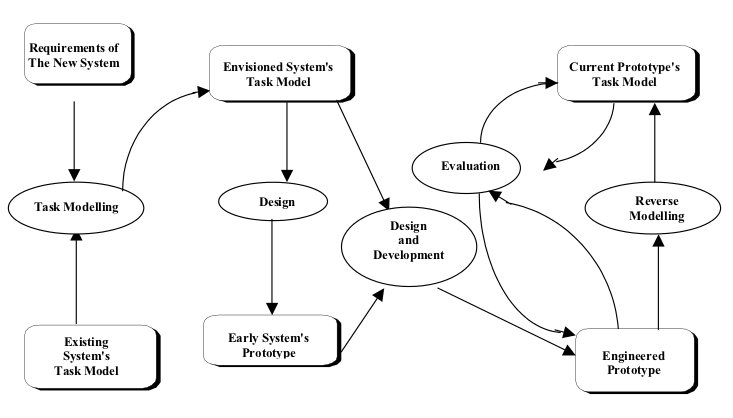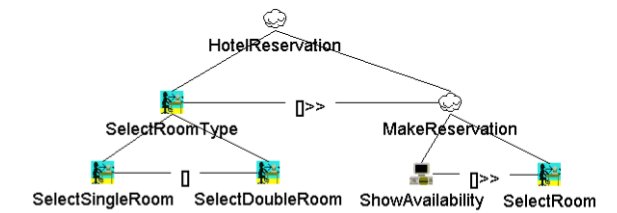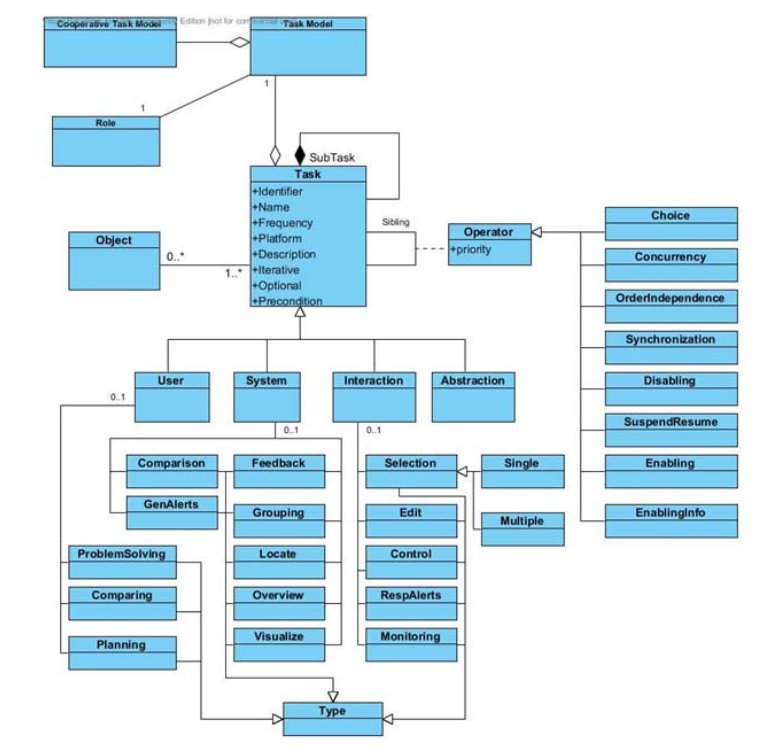The CTT notation is defined in terms of a hierarchical
composition of temporal operators over named tasks, that relate a
parent task to a non-empty set of child tasks. Tasks are associated
with metadata including simple expressions over preconditions.
Note: the icons used for node and link types are informative.
3.1 Hierarchy
 Figure 4: Task hierarchy.
Figure 4: Task hierarchy.
Tasks at same level represent different options or different
tasks at the same abstraction level that have to be performed.
Read levels as “In order to do T1, I need to do T2 and T3”, or
“In order to do T1, I need to do T2 or T3”
3.2 Enabling
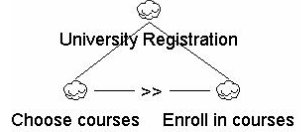 Figure 5: Task enabling.
Figure 5: Task enabling.
Specifies second task cannot begin until first task performed.
Example: I cannot enroll at university before I have chosen which
courses to take.
3.3 Choice
 Figure 6: Task choice.
Figure 6: Task choice.
Specifies two tasks enabled, then once one has started the
other one is no longer enabled. Example: When accessing a web site
it is possible either to browse it or to access some detailed
information.
3.4 Enabling with information
passing
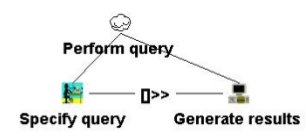 Figure 7: Task enabling with information
passing.
Figure 7: Task enabling with information
passing.
Specifies second task cannot be performed until first task is
performed, and that information produced in first task is used as
input for the second one. Example: The system generates results
only after that the user specifies a query and the results will
depend on the query specified.
3.5 Concurrent tasks
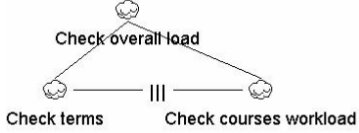 Figure 8: Task concurrency.
Figure 8: Task concurrency.
Tasks can be performed in any order, or at same time, including
the possibility of starting a task before the other one has been
completed. Example: In order to check the load of a set of
courses, I need to consider what terms they fall in and to
consider how much work each course represents
3.6 Concurrent communicating
tasks
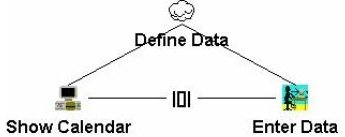 Figure 9: Task concurrent communicating
tasks.
Figure 9: Task concurrent communicating
tasks.
Tasks that can exchange information while performed
concurrently. Example: An application where the system displays a
calendar where it is highlighted the data that is entered in the
meantime by the user.
3.7 Task independence
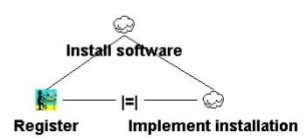 Figure 10: Task independence.
Figure 10: Task independence.
Tasks can be performed in any order, but when one starts then
it has to finish before the other one can start. Example: When
people install new software they can start by either registering
or implementing the installation but if they start one task they
have to finish it before moving to the other one.
3.8 Disabling
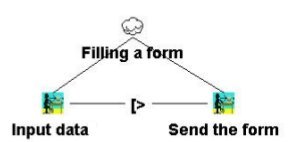 Figure 11: Task interruption.
Figure 11: Task interruption.
The first task (usually an iterative task) is completely
interrupted by the second task. Example: A user can iteratively
input data in a form until the form is sent.
3.9 Suspend-Resume
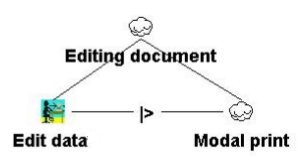 Figure 12: Task suspension.
Figure 12: Task suspension.
First task can be interrupted by the second one. When the
second terminates then the first one can be reactivated from the
state reached before Example: Editing some data and then enabling
the possibility of printing them in an environment where when
printing is performed then it is no possible to edit.
